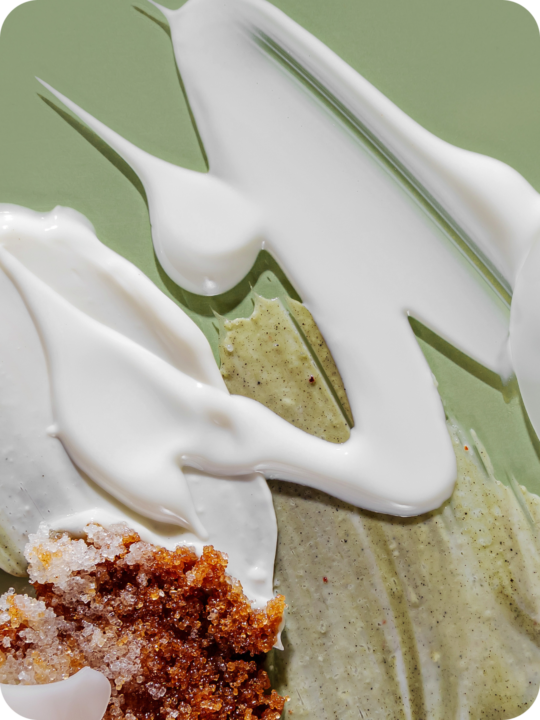What if… ingredient-led beauty is transforming the way we buy?

How science-conscious are you when you shop?
Most of us would say that we’re fairly non-scientific when browsing the aisles. We make decisions based on brand strength and our knowledge of product benefits. We know what moisturiser does, and we know who sells them.
But when it comes to certain beauty and skincare products, there’s a new kid on the block joining the ‘what’ and ‘who’ in the decision-making process. Beauty and wellbeing shoppers are increasingly concerned with the how.
More and more consumers are shopping ingredient-first when it comes to skincare and beauty. Buyers are shifting away from buying products because of their brand aspirations, and towards being loyal to specific ingredients that work for them.
Long gone is the one-size-fits-all skin saviour. Consumers are looking to target their problem areas with certain ingredients that are proven to improve their skin. The result? A completely personalised skincare routine that targets individual needs and goals.
What is ingredient-led beauty?
Quite simply, ingredient-led beauty refers to skincare products that contain a hero ingredient. Popular hero ingredients include vitamin C, squalene, hyaluronic acid, retinol and more. The hero ingredient takes centre stage in the product, with minimal other ingredients at play. The benefit? It’s easier for consumers to know how to help their skin.
The rise of ‘Skintellectuals’
Consumers are now more educated than ever about all things beauty and skincare. These so-called ‘Skintellectuals’ are taking to search engines to research the best products out there for their skin type or the problem areas they’re looking to combat.
Users are also a lot more informed because of educational content on social media platforms. TikTok is thriving with ‘skinfluencers’ discussing skincare routines, skin types, skincare myths, benefits of certain ingredients, and recommending effective products – all to help users learn more about their skin and find what works best.
Ingredients like retinol, niacinamide and hyaluronic acid have trended on social media platforms in recent years, with content creators amassing millions of views on videos raving about these ingredients and sharing products that do it well. This has undoubtedly translated to buying behaviour, with over 70% of TikTok users saying they buy products they’ve stumbled across on the platform.
Continuing the momentum of non-toxic beauty
The popularity of non-toxic beauty has likely contributed to the ingredient-first attitude. Toxic-free beauty rocketed into the mainstream years ago as negativity surrounding products containing ‘nasties’ like parabens and sulphates came to light.
As a result, many brands started highlighting ‘free from’ on their packaging, to help buyers quickly identify products that don’t contain any ingredients harmful to the skin and environment.
Removing harmful ingredients from products has carved the path for scientifically proven ingredients in skin care. Brands like Khiels, No7 and Clinique have always taken a scientific approach to beauty. In-store experiences such as skin analysis technology and sales assistants donning lab coats build trust and authority between brands and consumers.
What has historically been routed in aspiration, beauty buying behaviour has shifted towards needs-based motivations. Beauty has moved on from one idealistic pillar of what ‘beautiful’ looks like, with consumers buying into brands that align with their aspirations. Now, there is a focus on buying products that work for their individual needs, with less weight put on the brand name itself.
How are brands responding to ingredient-led beauty?
As more consumers are looking to shop ingredient-first, there’s a huge opportunity for beauty brands and retailers to tune their approach to suit the needs of buyers.
Many brands are already on it. The Ordinary and The Inkey List are championing the hero ingredient. These brands are taking a stripped-back, scientific approach to skincare with simple products containing very few ingredients at affordable prices.
To instil even more trust and transparency, many brands are highlighting the potency percentages of each hero ingredient on their packaging, for the data and number-savvy consumers out there.
Online beauty retailers such as Cult Beauty and Feel Unique have created navigation features on their websites that now enable users to filter their search by ingredient, rather than just by product and brand.
There is still a heavy element of aspirational thinking in purchasing decisions, with consumers desiring to achieve the results that brands are promising them. But brands are beginning to balance this aspiration with what consumers really need – a product that genuinely works for them.
An exciting opportunity for brands to evolve
Consumers now more than ever are educated and empowered to make informed purchase decisions about what they’re putting on their skin.
As a result, brands that follow some simple principles will thrive with this growing audience: listen to needs, heroise ingredients, and be transparent.
This presents a great opportunity for existing and emerging brands. Brands can encourage people to purchase products from a variety of brands because of their loyalty to specific ingredients.
However, to fully understand how beauty buyers are making decisions, and how much of a role ingredients are playing in the process, beauty and skincare brands need to bypass the say-do gap with a behavioural-led approach to their research.
Want to find out more about opportunities for your brand to evolve with consumer buying behaviours? Get in touch with Becki Jarvis to discuss more – b.jarvis@trinitymcqueen.com

 Back to articles
Back to articles

